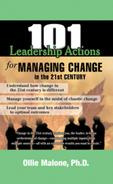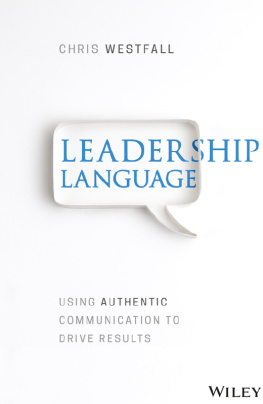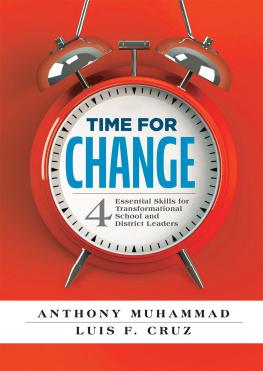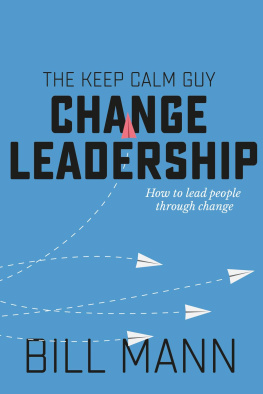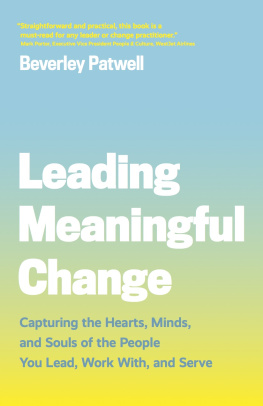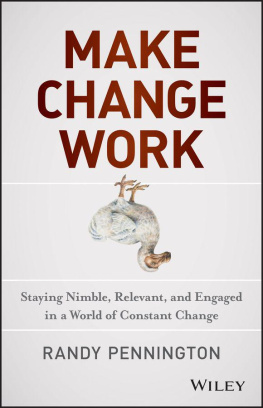
Copyright 2011, by Ollie Malone
All rights reserved. Any reproduction in any media of the materials that appear in this book without written permission from HRD Press is a violation of copyright law.
Published by: HRD Press
22 Amherst Road
Amherst, MA 01002
800-822-2801 (U.S. and Canada)
413-253-3488
413-253-3490 (fax)
www.hrdpress.com
ISBN 978-1-59996-226-9
Cover design by Eileen Klockars
Editorial services by Robert W. Carkhuff
Production services by Jean S. Miller
Dedication
This book is dedicated to the companies, individuals, teams, and systems that have contributed to my understanding of change management and have provided me with a context, dialogue, and a laboratory in which that understanding could be enhanced.
This book is also dedicated to my grand-daughters: Isabelle, Olivia, and Ava, who will be change agents in their generation.
Introduction
Any student of life and work in the twentieth century will recognize that life and work have changed in the twenty-first century.
One can focus on technology and the iPodization of a new generation, the microscopic footprints that our laptop computers now hold, or the fact that more information is accessible through the average cell phone than was previously accessible in a mainframe computer. Technology has changeddramatically soand it continues to do so.
But the changes are not restricted to technology. People have also changed in the shift from the twentieth to the twenty-first century. There are more women within the working population, more dual-career couples, more people of color, more people working beyond 65, and more people willing to say Take this job and shove it. The people dimension, like the technology dimension, has changed dramatically.
Globalization, as well, has changed. Concerns about how management decisions in the United States will impact individuals across the globe are now quite commondespite the fact that a few decades ago we would not have been able to find the countries of concern to us on a map!
All of these concerns and changes have significantly impacted a leaders ability to lead the people, systems, and organizational structures for which he or she may be accountable. And there is little, if any, evidence that these factors driving change are slowing down. Every indicator suggests that they will continue to be significant factors that leaders cannot ignore as they develop and implement future strategies and initiatives.
This book is written to offer a perspective that has been shaped and informed by more than 30 years of leading and managing change in and with some of the largest corporations in America. This book does not pretend to have all of the answers to managing changechange is far too complex for that. It does, however, offer up proven ideas and perspectives that should be useful to the leader when considering his or her approach to change.
Whether the change is small in nature, or if it is so large that it will redefine the way work is done within your industry, the insights here should prove useful. These actions have been weighed, considered, and evaluated for their usefulness. Now they are presented to you with every hope that they will help make you rich and famousand that youll feel obliged to share the wealth with us.
To your success.
Ollie Malone, Jr., Ph.D.
Prologue:
How to Read This Book
This book is not to be read like Gone With the Wind or The Last of the Mohicans. Its not that kind of book. This book is written for individuals who want to do something with the information they have obtained. Ideally, they will want to manage themselves, their teams, and the organizations in which they work in navigating the uncertain waters of change.
This being the case, there are several approaches one might use in reading this book:
You can read the book as though everything listed in the book occurs within the order it is written. An attempt was made to write this book in a logical fashion, starting with you, the initiator of change, and concluding with considerations for creating a change-resilient organization. This change resiliency, we have found, is a critical point-of-view, considering the fact that within most organizations the changes are non-stop.
You could also read this book by focusing on the chapters or suggestions in the book that seem most relevant to the change that youre facing. This functional view is useful and, if you are in a hurry, is not a bad way to get practical, timely information for the changes you are facing.
You might also start with the first chapter (strongly recommended) then follow with whatever chapter strikes your fancy. This rather nomadic approach might capture your interest longer, since youre focusing only on those areas that are of interest to you regardless of their practical benefit.
Another alternative is for you to read this book in a community of leaders where you can compare notes, raise questions, and/or conduct a more robust dialogue about the ideas captured here. These leaders might be peers, direct reports, or individuals with whom you have a mentoring relationship. The most important criteria for those engaging in this dialogue, obviously, is that they are actively involved in creating change in their environments. Holding that primary criteria should ensure a relevant dialogue for all parties.
However you go about approaching the various chapters of this book, one recommendation is essential: read with the view of doing. The books in the 101 Leadership Action series are not designed for people who think about leadership; they are designed for individuals who do leadershipand who would like to do leadership better.
Now, lets get started.
Chapter 1
Change Starts at Home: Manage Yourself
In this chapter, well explore the critical role the leader plays in leading the change effort. A few decades ago, little attention was given to the importance of the leader initiating change in the change process. It was as if everything the leader did was fine and that the people just need to be whipped into shape.
Not so.
Much of the information that has become available about failed efforts has pointed to the leader as an essential variable in successfully managing change. Whether the focus was on the leader managing his or her ego, managing his or her fears, or managing his or her resistance to the change he or she must lead, the leader is a critical variable, and to miss this essential reality is to doom your change (and yourself) to less than optimal results.
Conversely, by starting with yourself you can potentially accomplish a few goals:
1. You get to scrutinize yourself before (or as) others do. Too often the leader assumes that he or she is on point and that others are messed up (the Im OK, youre a disaster posture), creating the type of arrogance and hubris that leaves the leader standing naked and ignorant.
2. You become your own diagnostician. Rather than waiting for someone else to point out opportunities for you to change in order to better align your leadership approach with the changes needed, you look carefully at your own approaches and identify the disconnects between what you have done and other approaches that may have been more effective.
3. You become, potentially, your own coach. External coaching is often a worthwhile investment in a leaders growth, but internal coaching is the ultimate goal of any coaching process. Internally scrutinizing your thoughts, your actions, and your interactions positions you to identify other alternatives that might be available to you. The combination of diagnosing and recommending alternatives should enable you to create great leadership-related questions that should begin a search for good leadership-related answers.
Next page
